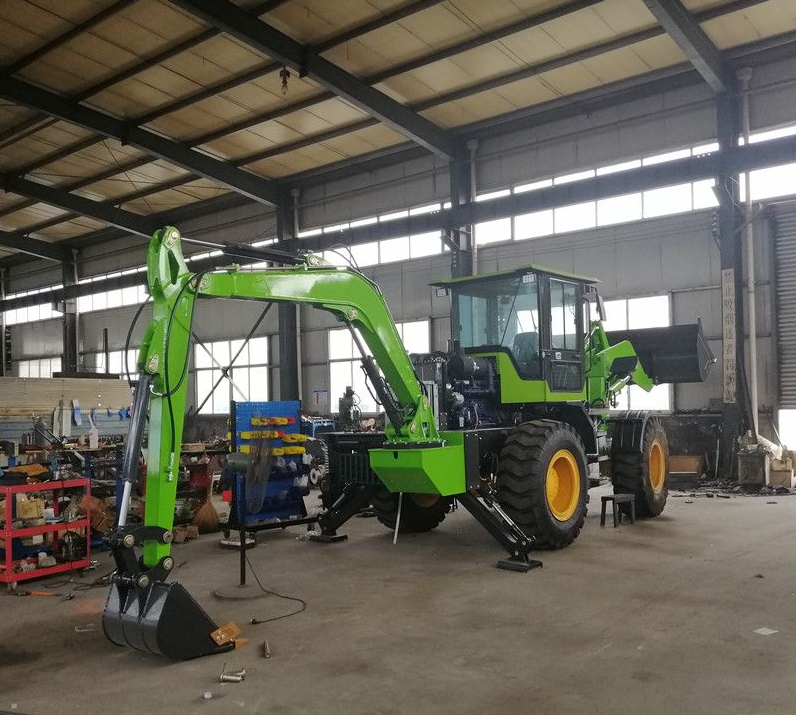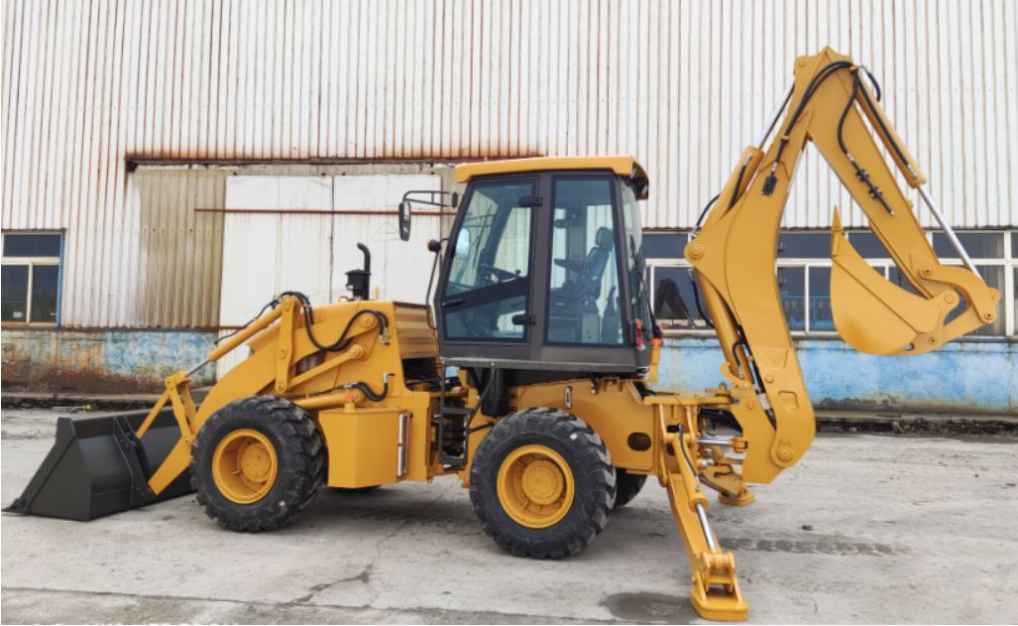An backhoe loader is a single unit made up of three pieces of construction equipment. Commonly known as "busy at both ends". During construction, the operator only needs to turn the seat to change the working end. The main job of the backhoe loader is to dig trenches to route pipes and underground cables, lay foundations for buildings and establish drainage systems.
The main reason backhoe loaders are on all construction sites is because of the need to dig and move dirt for various projects. While many other tools can do a job like this, a backhoe loader can increase your efficiency significantly. In comparison, backhoe loaders are more compact than larger, single-purpose equipment such as crawler excavators. And they can also be moved around various construction sites and even run on the road. While some mini loader and excavator equipment may be smaller than a backhoe loader, using a backhoe loader can save a significant amount of time and money if a contractor is performing both excavation and loading operations.
An backhoe loader includes: powertrain, loading end, and excavation end. Each piece of equipment is designed for a specific type of job. On a typical construction site, excavator operators often need to use all three components to get the job done.
Powertrain
The core structure of an backhoe loader is the powertrain. The powertrain of the backhoe loader is designed to run freely on a variety of rugged terrains. Featuring a powerful turbodiesel engine, large deep-toothed tires and a cab equipped with driving controls (steering wheel, brakes, etc.).
The loader is assembled at the front of the equipment and the excavator is assembled at the rear. These two components provide completely different functions. Loaders can perform many different tasks. In many applications, you can think of it as a powerful large dustpan or coffee scoop. It is generally not used for excavation, but is primarily used for picking up and moving large quantities of loose materials. Alternatively, it can be used to push earth like a plow, or to smooth the ground like butter on bread. The operator can control the loader while driving the tractor.
The excavator is the main tool of the backhoe loader. It can be used to excavate dense, hard material (often soil) or to lift heavy objects (such as sewer box culverts). An excavator can lift the material and stack it to the side of the hole. Simply put, an excavator is a powerful, huge arm or finger, which consists of three parts: a boom, a bucket, and a bucket.
Other extras typically found on backhoe loaders include two stabilizing feet behind the rear wheels. These feet are critical to the operation of the excavator. The feet absorb the impact of the weight of the excavator as it performs excavation operations. Without stabilizing feet, the weight of a heavy load or the downward force of digging will damage the wheels and tires, and the entire tractor will bounce up and down. Stabilizing feet keep the tractor stable and minimize the impact forces generated when the excavator digs. Stabilizing feet also secure the tractor from slipping into ditches or caves.
safe operating techniques
1. Before digging with the backhoe loader, the mouth and legs of the loading bucket should be fixed to the ground, so that the front and rear wheels are slightly off the ground, and the fuselage should be kept level to improve the stability of the machine. Before excavation, the loading bucket should be turned over so that the mouth of the bucket faces the ground and the front wheels are slightly off the ground. Depress and lock the brake pedal, then extend the outriggers to lift the rear wheels off the ground and maintain a horizontal position.
2. If the boom suddenly brakes during its descent, the impact force caused by its inertia will damage the excavation device and destroy the stability of the machine, causing a tipping accident. During operation, the control handle should be stable and should not move sharply; the boom should not be braked midway when lowering. Do not use high gear when digging. The rotation should be smooth, without impact and used to pound the sides of the trench. The buffer block at the rear end of the boom should be kept intact; if it is damaged, it should be repaired before use. When shifting, the excavation device should be in the intermediate transportation state, the legs should be retracted, and the lifting arm should be lifted before proceeding.
3. Before loading operations, the slewing mechanism of the excavation device should be placed in the middle position and fixed with a pull plate. During loading, low gear should be used. The float position of the valve should not be used when the bucket lift arm is being raised. The distribution valves of the hydraulic control system are divided into front four valves and rear four valves. The front four valves control the outriggers, lifting arms and loading buckets, etc., and are used for outrigger extension and loading operations; the rear four valves operate the buckets, slewing, and moving parts. Arms and bucket handles, etc., used for rotation and excavation operations. The power performance of the machinery and the capabilities of the hydraulic system do not allow and are impossible to carry out loading and excavation operations at the same time.
4. When the first four valves are working, the last four valves must not work at the same time. During driving or operation, no one is allowed to sit or stand anywhere on the backhoe loader except outside the cab.
5. Generally, backhoe loaders use wheeled tractors as the main engine, and are equipped with loading and excavation devices at the front and rear respectively, which increases the length and weight of the machine. Therefore, avoid high speeds or sharp turns when driving to prevent accidents. Do not coast in neutral when going downhill. When the hydraulic piston rod of the bucket and bucket handle is maintained in the fully extended position, the bucket can be brought close to the boom, and the digging device is in a short state, which is conducive to travel. When driving, the outriggers should be fully retracted, the excavating device should be firmly fixed, the loading device should be lowered, and the bucket and bucket handle hydraulic piston rods should remain in the fully extended position.
6. After the wheeled tractor is converted into an backhoe loader, the weight of the tractor increases significantly. In order to reduce the damage to the tires under heavy load, measures are taken to keep the rear wheels off the ground when parking. When the parking time exceeds, the outriggers should be raised to lift the rear wheels off the ground; when the parking time exceeds, the rear wheels should be lifted off the ground and should be supported with pads under the rear suspension.


Post time: Aug-18-2023
